Board: 2020-2021 Amplid Creamer, 163 cm
Available Sizes: 158,163, 165, 168 cm
Stated Weight: 3000 grams
Stated Dimensions (163 cm): 303-259-297 mm
Stated Sidecut Radius (163 cm): 6.3 m
Stated Rocker Profile: “Cruise Camber” (traditional camber w/ rockered nose)
Stated Flex: 8/10
Stated Nose Length: 250 mm
Stated Tail Length: 190 mm
Stance Setback: 15 mm
Reference Stance: 22” (56 cm)
Core Construction: Poplar/Birch + Carbon & Basalt Stringers + TPU strips + Fiberglass Laminate
Base: Sintered 7
Boots / Bindings: K2 Ender / Burton Cartel
Stance: 22”, 15°, -9°
Reviewer: 6’2”, 165 lbs
Test Locations: Telluride, CO; Sierra La Sal, Snowbird, & Wasatch Backcountry, UT
Days Tested: ~10
[Note: Our review was conducted on the 19/20 Creamer, which was not changed for 20/21, apart from graphics.]

Intro
We tested the old Amplid Creamer a few years ago and found it to be a surfy yet stable freeride board. It had a rocker profile and shape that was easy to maneuver, but with a stiffer flex that provided good stability.
Since then, Amplid has completely overhauled the Creamer, now billing it as an aggressive big-mountain board with a versatile twist. The changes to its shape, construction, and rocker profile all combine to make it almost an entirely new board.
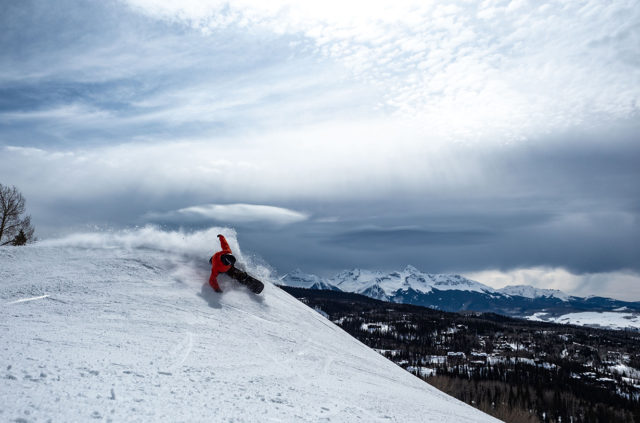
This season I’ve been spending time on the new Creamer to see how it compares to numerous other freeride and freestyle boards out there. And after that time, I think the Creamer offers a combination of traits not seen on many other boards right now, and that combination could be very appealing to certain people.
Construction, Shape, and Rocker Profile
The Creamer’s core has been updated, most notably with unidirectional carbon stringers, biaxially laminated basalt stringers, and — new for 19/20 — their “Viscodamp” TPU strips. All of these elements are designed to make the board stiff and damp, ideal for aggressive riding and high speeds.
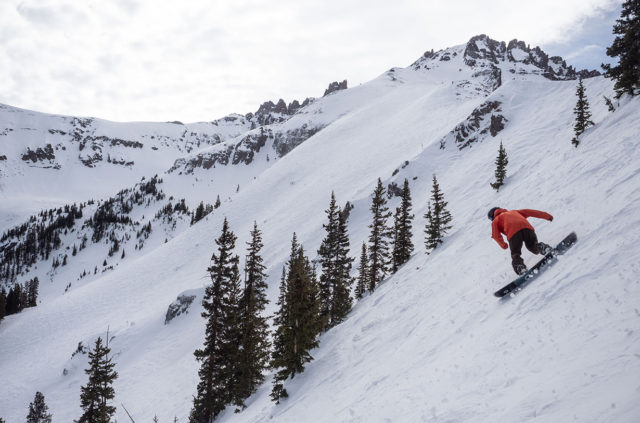
The Creamer’s shape is also completely different from the version I tested back in 2014 (though it’s the same as the 18/19 Creamer). The 18/19–19/20 Creamer’s directional sidecut is mellow with an 8.6 m radius and a small 6 mm of taper for the 163 cm length. It’s also a wide board overall with a waist width of 259 mm for the 163 cm length.
The Creamer also follows a recent (mainly cosmetic) trend of blunting the tip and tail. Andrew Forward’s recent review of the Jones Ultra Mountain Twin discusses the rationale of blunted tips in detail. Essentially, the idea is that increased surface area in the tips makes for increased flotation. In practice, I haven’t noticed much of a difference.
The rocker profile is probably the most notable and surprising aspect of the Creamer’s new design. The previous iteration that I reviewed was basically flat from the front inserts to the tail with smooth-rising but substantial tip rocker. The new Creamer is almost completely cambered, with a nearly imperceptible amount of tip rocker starting just a few centimeters before the contact point. There is no tail rocker.

Flex Pattern
Overall, the Creamer is quite stiff. Here’s how I’d break down its flex pattern:
Nose: 8/10
The Creamer’s nose is stiff. Rossignol XV stiff.
Underfoot: 6/10
Hand-flexing the Creamer, its flex underfoot is a bit softer than the nose and tail, but not unusually so compared to other freeride boards. The Creamer is stiffer underfoot than the Rossignol Krypto and Rossignol Angus, and slightly softer than the Burton Flight Attendant.
Tail: 9/10
The Creamer has a very stiff tail, which is not all that surprising given Amplid’s intentions with the board. The Creamer’s tail is stiffer than the Flight Attendant’s.
Torsional Flex
I’d say that the Creamer’s torsional flex is about average for a freeride board. If I had to put a number to it, I’d say it’s about 7/10.
Powder
For me, the new Creamer took some getting used to in deep powder. With so many freeride boards turning to early rise / rocker for flotation in deep snow, the new Creamer’s small amount of taper and very subtle tip rocker left me feeling like I was about to go over the nose in deeper snow. After some adjustment, I was able to ride deeper snow on it by shifting my weight back and using my back foot to steer, though it definitely wasn’t the easiest board I’ve ridden in powder.
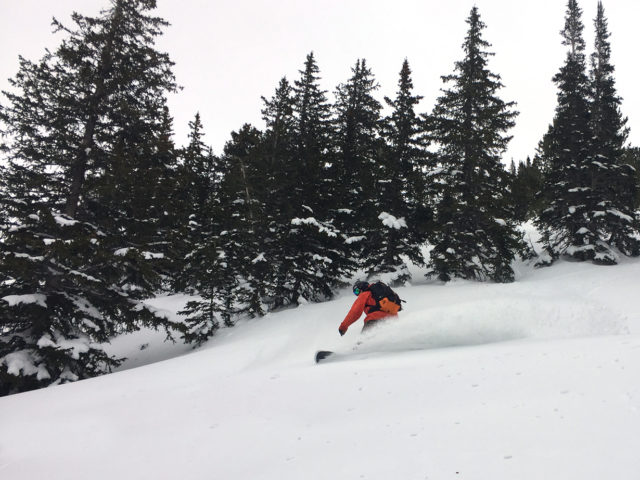
If you primarily want a board that’s really easy and intuitive in powder, there are now a ton of better, more powder-oriented options out there (e.g., Rossignol Sushi, K2 Cool Bean, Venture Euphoria, Never Summer Swift). But the Creamer starts to stand out from many of those boards when that perfect powder starts to get cut up…
Chop / Variable Snow
The Creamer excels in variable conditions. As in powder, its minimal rocker in the tip took a while to get used to in variable snow — it’s not a surfy board, nor is it meant to be. But the new Creamer’s stiff, slightly tapered nose is definitely dependable, and over time I learned to trust the nose when driving through variable snow at high speeds.
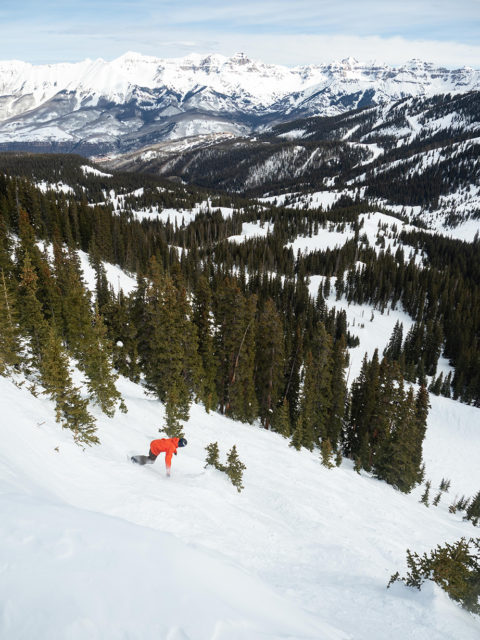
I think the new Creamer thrives in unpredictable conditions like dust-on-crust, windblown crust, and chalky pseudo-moguls. The Creamer is also at home dropping cliffs, popping natural airs, and finding transitions. I’d often find myself cracking airs with unknown landing quality, knowing that I could depend on the Creamer to feel stable not only on the landing, but also the runout.
Where most freeride boards with softer noses and more rocker would buckle, I’ve been consistently impressed by the Creamer’s ability to drive through rough conditions. It’s one of the better boards I’ve ever ridden in variable conditions, ranking up there with the Flight Attendant in this regard.
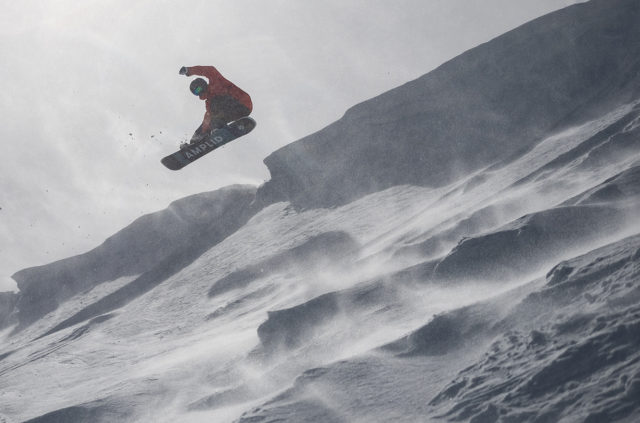
I rode the Creamer through the course at the Bird Banked Slalom, which required high edge angles, quick transitions, and driving through turns at high speeds — all while handling ruts and chunder. I found it to be relatively quick edge-to-edge and dependable through the worst of the ruts.
Groomers / Hardpack
Much of what makes the Creamer great in variable snow translates over to smooth, firm snow. Its stiff and damp construction keeps it composed during high-speed, aggressive riding, while a comparatively mellow torsional flex makes initiating turns easy.
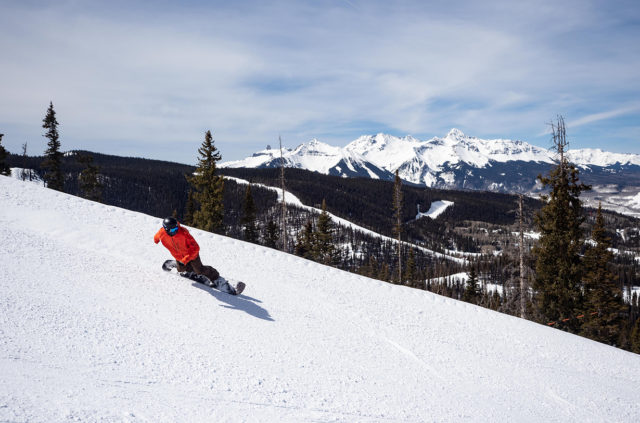
The Creamer is very comfortable railing large-radius carves and slarves on both fresh corduroy and chopped-up groomers. Small-radius turns aren’t quite as easy, given its longer sidecut, but the Creamer’s width allows for high edge angles if necessary.
On cold, chattery mornings, I really noticed the Creamer’s damp feel when riding with friends who were on other boards and who were not enjoying themselves as much as I was. The only boards I’ve ridden that eclipse the new Creamer’s level of damping are custom-built boardercross boards built by Kessler or Oxess. That’s very impressive.
Overall, the Creamer makes it easy to ride fast and hard on hardpack.
Comparisons
The Creamer’s combination of a camber-heavy profile and burly big-mountain focus has few peers in today’s market. It’s reminiscent of the classic Burton Custom X, but with more focus on big-mountain riding than the (in my opinion) hardpack-focused Custom X.
The Burton Flight Attendant also focuses on big-mountain freestyle, but goes about it in a decidedly non-traditional route with an oversized, soft shovel. The Creamer and Flight Attendant share the stability and snap in big-mountain freestyle situations, but the Creamer is decidedly more damp at high speeds in chop and on hardpack.
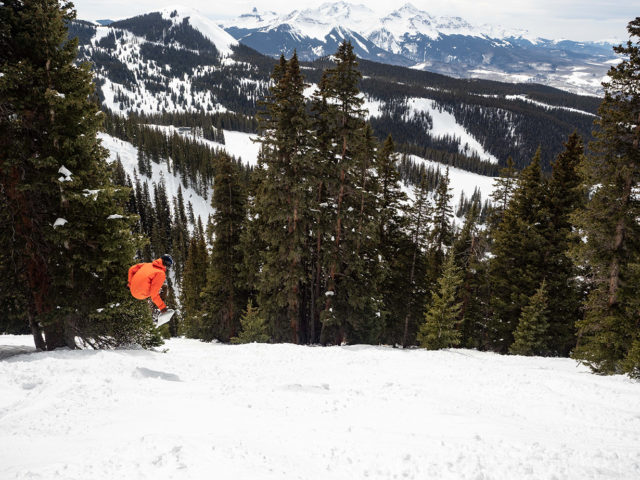
The Rossignol XV is slightly stiffer than the Creamer, but has more taper and an asymmetric flex profile that makes it less comfortable when it comes to snapping airs and landing in sketchy snow. I’d prefer the XV for charging big-mountain lines due to its superior float and similar overall stiffness, but for playing around inbounds at a steep resort like Telluride in variable conditions, I’d prefer the Creamer.
Who’s It For?
The Creamer is for aggressive inbounds riders who like riding fast in variable conditions and / or enjoy treating the whole mountain like a park. It’s a solid 1-board-quiver option for strong riders who want a burly, do-everything, big-mountain freestyle board. Just keep in mind that its subtle tip rocker and moderate taper might take some getting used to in deeper snow, and make it slightly better suited to lower-snow areas than high-snow areas.
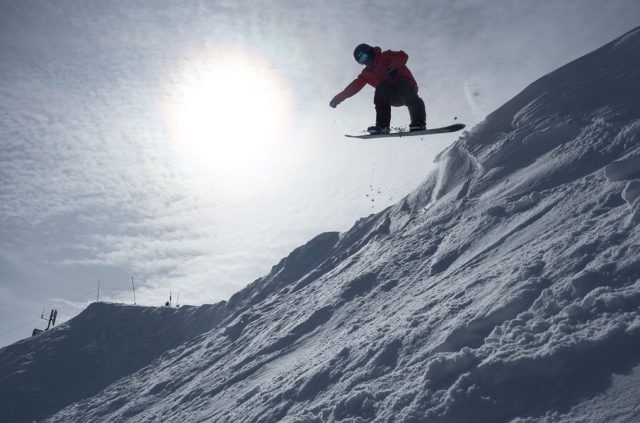
The Creamer is not for those who want a board that is easy to ride, nor for those who want a floaty, easily maneuverable powder or freeride board. If you want something more forgiving, surfy, and that floats better, it’d be worth checking out the Rossignol Krypto and Angus.
Bottom Line
The redesigned Amplid Creamer is a classic big-mountain freeride board with a few notable twists. Its camber-heavy profile is combined with an exceptionally damp construction, making for a stable, aggressive board that makes hardpack and variable conditions much more enjoyable than the surfier, easier boards out there.
